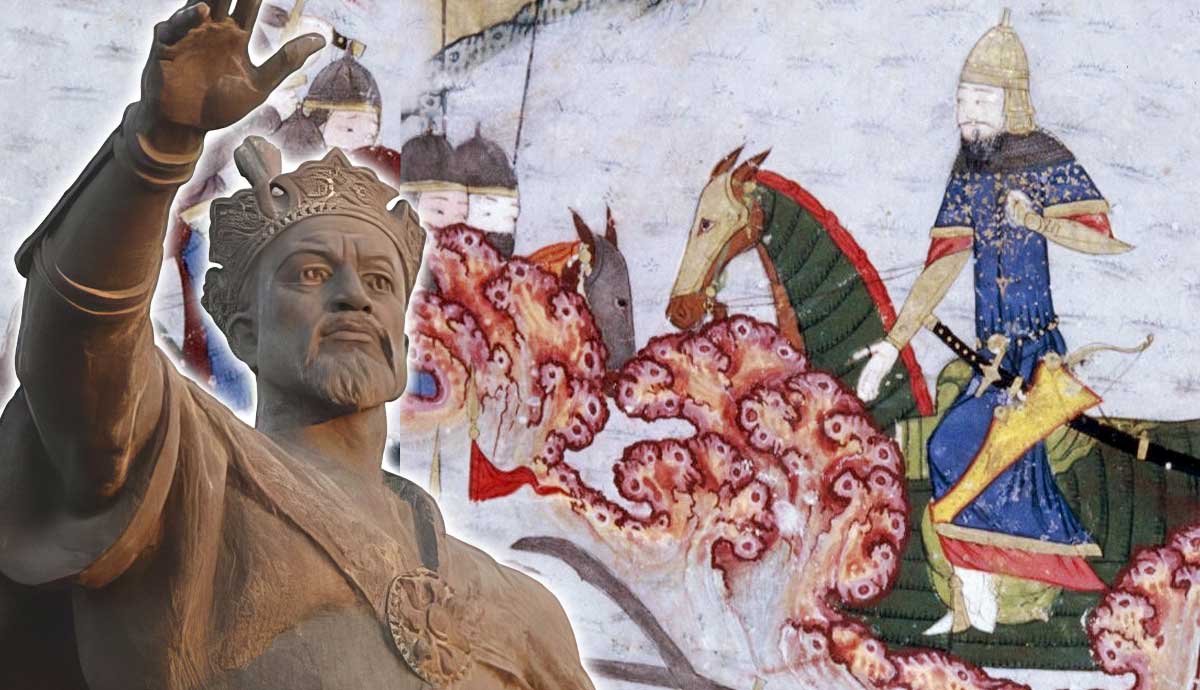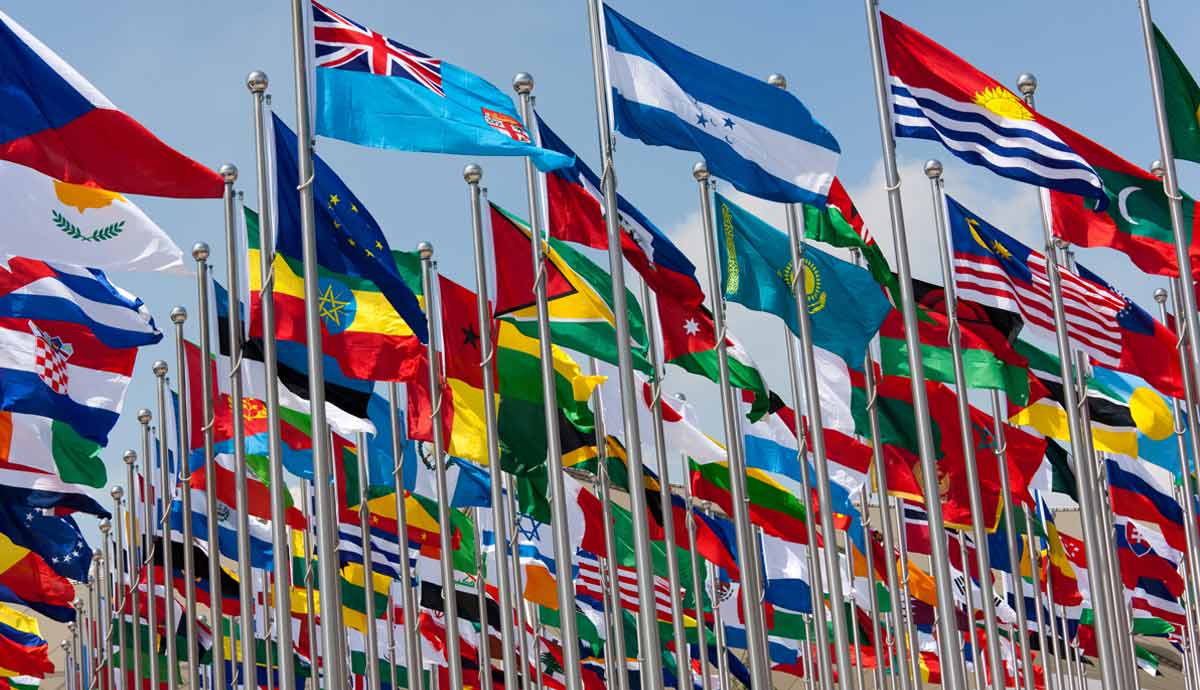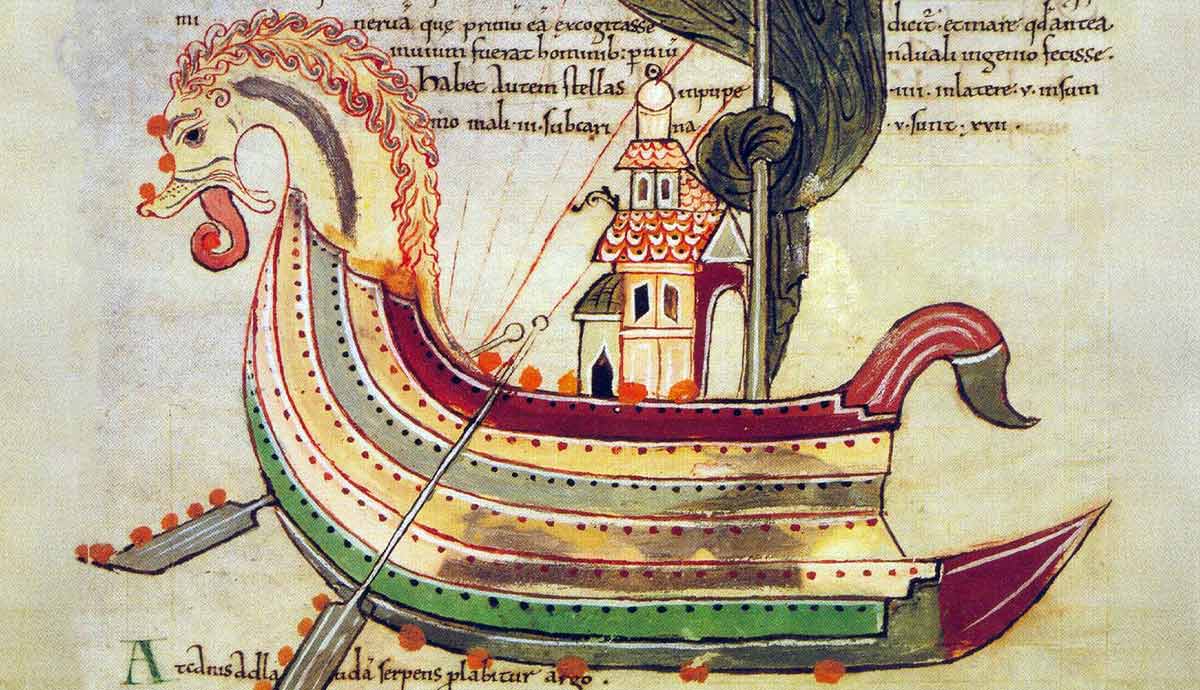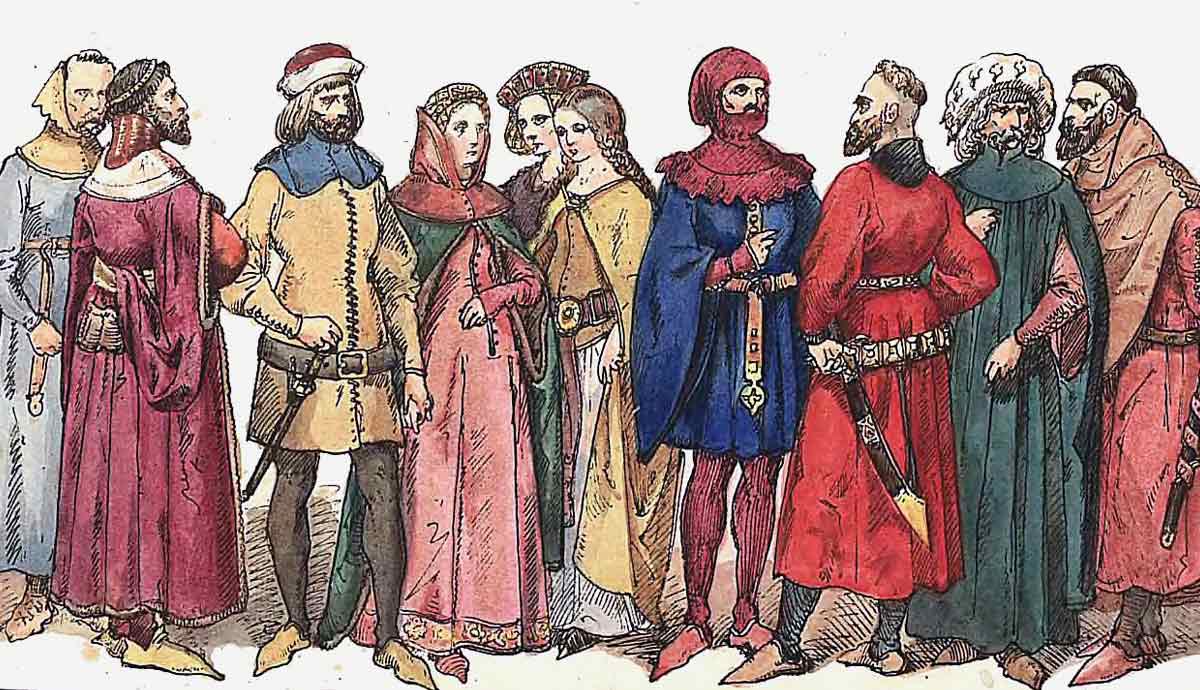
WWW.THECOLLECTOR.COM
The Story of Tamerlanes Conquest of Delhi
In 1398, the armies of Tamerlane, founder of the Timurid Empire and self-proclaimed successor of Genghis Khan, swept through the Sultanate of Delhi in modern northern India. The brutal invasion ended with the fantastically destructive siege of Delhi, which left the great city devastated for almost a century and profoundly impacted the history of India.BackgroundA bust of a facial reconstruction of the legendary Timur, anglicized to Tamerlane from his Persian nickname Temur Lang or Timur the lame. Source: Wikimedia CommonsBorn sometime in the 1320s, Timur (known as Tamerlane from the Persian for Timur the Lame due to an affliction from an old leg wound) is one of the most legendary conquerors in history. From humble beginnings in modern-day Uzbekistan, he built an empire on the model of the great Genghis Khan. For 30 years, he expanded his new Timurid Empire throughout Central Asia into Persia and led expeditions into the Caucasus and modern-day Russia. Then, in 1398, he had turned his attention south to the Delhi Sultanate of northern India.India was fabulously wealthy, and the city of Delhi was arguably the pinnacle of this wealth. However, few of the great conquerors of yesteryear, from Alexander the Great to Genghis Khan, had made much headway into the subcontinent. The Islamic Ghurid Dynasty had taken Delhi in 1175, but their rule was short-lived. In their place, dynasties of fluctuating power and control constantly rose and fell.By 1398, the current Tughlaq Dynasty was, Tamerlanes intelligence informed him, a shadow of its former self. Decades of civil conflict and fratricide had reduced their empire significantly. Even within their borders, the provincial rulers paid only lip service to the Shah, Mahmud II. What governmental authority was left belonged to his Vizier, Mallu Iqbal Khan, who ruled in Delhi, and Mallus brother, Sarang, who ruled in Multan.City of Delhi in the Catalan Atlas, 1375. Source: Wikimedia CommonsReligion provided another Casus Belli. Though the Tughlaq Dynasty was Muslim, many of their subjects were Hindu and enjoyed a relatively high degree of religious autonomy thanks to the Tughlaqs tenuous control over their Sultanate. Consequently, Tamerlane, a Muslim himself, proclaimed the Tughlaqs not true defenders of the faith and that his invasion would be a form of Jihad. This religious angle was likely just a convenient excuse for Tamerlane; nevertheless, it boosted his religious prestige and the wars legitimacy.Tamerlane was eager to exploit this instability and thus achieve an accolade not even the greatest of conquerors had enjoyed. Not to mention the religious standing and fabulous plunder, conquering the Delhi Sultanate would bring him. Yet even facing a weakened Sultanate and with religious fervor behind him, Tamerlane knew that conquering Delhi would require no small effort on his part.Entering the SubcontinentA map of the many tributaries of the Indus River and the mountains of the Hindu Kush that stood between Tamerlane, who began his invasion from Kabul, and the city of Delhi. Source: Wikimedia CommonsWhen it came to warfare, Tamerlane possessed the power and ability of the Turco-Mongolic nomadic warriors, with the logistical and administrative prowess of the Central Asian and Persian imperial states. His administration had gone into overdrive, raising a massive army of 90,000 men from all corners of his empire to his capital of Samarkand in March 1398. India, it was said, possessed four great defenses that Tamerlane would need to overcome. First were her forbidding mountains, second, the great rivers and jungles. After these natural barriers came the third defense of Indias many fierce warrior cultures and armies, and then finally the monstrous battalions of war elephants.The first two defenses posed the most immediate problem. Directly between him and Delhi lay the mighty mountains of the Hindu Kush, not to mention the mighty Indus River and its five great tributaries of the Punjab region. Tamerlane, though, would never let something as minor as near-impassible natural boundaries stop his quest for glory. The mountains of the Hindu Kush and their Kator and Siyah-Posha inhabitants, known collectively as the Kafir, were Tamerlanes first challenge.The Hindu Kush, photo by Shahzad Ali. Source: UnsplashThe Kafir had long resisted outside influence while happily plundering the caravans and supplies of armies that crossed below their mountain. Alexander the Great had resorted to bribing them to ensure safe passage into India, but Timur would make no such concessions. Instead, while most of his army marched to Kabul, the nearly 70-year-old Tamerlane led a crack detachment of troops over seemingly impenetrable mountain passes right into the Kafir heartlands.The Kafir resisted fiercely but were soon scattered, enslaved or put to the sword. With the threat to his supply lines now removed, Tamerlane joined his army in Kabul. In late summer 1398, after convalescing from his mountain jaunt, he marched his army through the Khyber Pass and into India. Before him lay the great jungles and powerful river ways of the Punjab, but Tamerlane had brought with him a highly effective corps of engineers. Thanks to their work, he could have bridges built and subsequently dismantled in as little as two days, making short work of the rivers in his way.Plundering the PunjabThe shrine of Tughlaq Shah and Sufi saint Shah Rukn-e-Alam in the city of Multan, the citys many shrines and centers of Islamic worship, giving the city its nickname of The City of Saints, did not save it from Timurid forces. Source: Wikimedia CommonsOne may well wonder if Shah Mahmud II, Mallu, or Sarang knew or were prepared for Tamerlanes coming. Tamerlane had not been shy about his intentions; diplomats had been sent to Sarang directly, advising him to Pay me a yearly tribute, and if not, [Sarang] shall hear of my arrival with my powerful armies. Sarang had defiantly responded that if The desire of [Tamerlane] is to take this kingdom with its rich revenue. Well, let him wrest it from us by force of arms if he be able.A brave response indeed, and letting Sarang know he was coming might seem a mistake from Tamerlane. However, Tamerlane knew of the dire disunity within the Sultanate and had already confirmed there would be no army to meet his arrival before he had even left Samarkand. Earlier in the year, his grandson, Pir Mohammed, led an advance guard into India to besiege Sarang and Multan.No army responded to Pir Mohammeds arrival, and while Multan stubbornly held out for six months, no attempt was made to lift the siege. The Shah was too busy dealing with pretenders to his throne to project his authority that far outside of Delhi. Meanwhile, Mallu was unable to organize a strong enough force to lift the siege. The city finally fell just as Tamerlane himself arrived on the scene.Equestrian statue of Tamerlane from Tashkent, Uzbekistan. Source: Wikimedia CommonsBy the end of September, the rest of the Timurid army had entered the Sultanate and linked up with Pir Mohammed unopposed. Multan was brutally sacked, and Tamerlane began an inexorable march to Delhi. As he crossed the Indus and its five tributaries, he exercised a ruthless policy of carrot and stick. Cities and nobles that surrendered were treated kindly, in exchange for surrendering their treasure, but any that resisted, such as Tumbala and Dalpipur, suffered the same fate as Multan. Temples and mosques alike were plundered (a curious action for an army allegedly on Jihad), and many captives were taken.Many of the Islamic nobility and administrators surrendered to Tamerlane or defected outright rather than die in defense of the absentee Mahmud II. There was some opposition from the Hindu Rajput and Jat confederations, who stubbornly defended their homeland against overwhelming force. For their pain, they were slaughtered or enslaved.Arrival at DelhiThe remains of the Tughlaqabad fort, just outside Delhi. Shah Ghiyasuddin, founder of the Tughlaq dynasty, built it to defend against a potential Mongol invasion, but it was abandoned in 1327. Source: Wikimedia CommonsTons of treasure and, allegedly, over 100,000 captives were swept up by Tamerlanes unwavering advance through the Punjab region. Then, in mid-December, barely three months after entering India, Tamerlanes army arrived outside Delhi.Two of Indias defenses, the mountains and rivers, had failed to stop Tamerlane. Yet, taking the great city itself would not be an easy feat. Mahmud and Mallu prepared to defend Delhi with Indias third and fourth great defenses, the soldiers and elephants. As Tamerlane neared the city, the defenders sent out harrying forces to harass his troops. However, Tamerlane responded to these attacks with a calculated atrocity.After hearing that some of the captives from other cities had witnessed one of the skirmishes and cheered on Delhis defenders, he ordered all 100,000 captives to be executed in cold blood. Tamerlanes concern that the captives were preparing a revolt seems convenient, as does his religious justification that, as most of the prisoners were Hindus, their destruction was divinely sanctioned.Old Delhi today, photo by Sergio Capuzzimati. Source: UnsplashWhy take them prisoner in the first place, if their killing was a religious order, and why risk an uprising by keeping them with the army rather than having them taken back to his empire? It may be that this theatrical act of cruelty was done to bait Mahmud and Mallu into committing to an open battle, but this intention can never be proven. Regardless, on December 17, the defenders of Delhi sallied out to attack Tamerlanes army.Hindsight suggests Mahmud and Mallu should have stayed behind Delhis walls. A battle suited Tamerlane far more than a city assault or protracted siege, which would have taxed his supply lines while the unfamiliar Indian climate sapped the strength of his army. However, Mahmud was determined to seek a swift and crushing victory after Tamerlanes display of brutality and the destruction he had wrought on his march East. Additionally, Mahmud may have thought that a swift and decisive resolution would greatly benefit his royal authority, as opposed to being holed up in his capital by Tamerlane.War Elephants and Battle PlansSketch of a historical war elephant, 19th century. Source: Wikimedia CommonsThe battle certainly would be decisive and would impact Mahmuds royal authority, but fighting an open battle rather than a siege gave Mahmud another crucial advantage over Tamerlane. It meant he could deploy his secret weapon and Indias fourth great defense. It was time for Tamerlane to address the elephant in the room, or, more accurately, the battlefield.The core of the Shahs army was his company of over 120 war elephants; indeed, the great beasts had fought in almost every war in the subcontinent. Often covered in armor, they would charge into enemies and wreak havoc while men on their backs hurled missiles down on their enemies. Tamerlanes army had not yet fought any elephants, but their reputation preceded them. Stories spread through his camp about how they could kill both a horse and rider by crushing them, and other rumors that greatly disquieted even his most experienced veterans. Tamerlane, however, had anticipated this anxiety and had prepared his strategy carefully.Tamerlane instructed his archers to aim at the men on the elephants backs and for his men to open gaps in their lines for the elephants to run through harmlessly. Crucially, however, by ensuring the defenders of Delhi sallied out to meet him, Tamerlane was able to choose the battlefield he wanted and prepare it in advance.He had palisades and earthworks constructed in key positions around his lines and had his men scatter caltrops across the field. Tamerlane even had the pack animals of his baggage trains chained up in front of his center as a sort of living wall to disrupt any direct elephant attack. These actions strengthened the resolve of his men, but their effectiveness against the elephants remained to be seen.Battle of DelhiAn image showing Tamerlane chasing Shah Mahmud II and his troops back to the walls of Delhi from the famous biography of Tamerlane, the Zafarnama of Ibrahim Sultan, 1436. Source: Wikimedia CommonsThe battle outside Delhi was, even by Tamerlanes standards, particularly brutal and bloody. It began when the Sultanates left wing tried to outflank the Timurids but were ambushed and routed by a mobile reserve positioned to see off just such an attack. In response, Shah Mahmud ordered the rest of his army to attack Tamerlanes center, led, of course, by the mighty elephants.Tamerlanes response has gone down as one of the most brilliant examples of strategic ingenuity in history. As all 120 armored elephants charged the Timurid center, their rampage was blunted by the caltrops and defenses prepared before the battle, just as Tamerlane planned.Then, the story goes, Tamerlane ordered the line of baggage camels to be set on fire and driven at the elephants, spooking the notoriously skittish pachyderms into trampling their own army. However, this particular episode seems to come from sources written many years after the battle. More contemporary sources do mention the baggage animals (usually recorded as buffaloes) playing a part in the anti-elephant strategy. Yet while both armies used incendiary weapons, making an accidental baggage animal fire possible, there is no way to say for certain if Tamerlane deliberately orchestrated such an event.A depiction of the Timurid cavalry, from the Zafarnama, 1436. Source: Wikimedia CommonsFlaming camels (or lack thereof) aside, Tamerlanes prepared defenses worked their magic perfectly, throwing the elephants, and consequently the troops following behind them, into chaos. The few elephants that reached the Timurid lines were neutralized by his archers exactly as Tamerlane had instructed. Shah Mahmud and Mallu, seeing the elephants fall and their flanks routed, fled back behind the citys walls.Even without their leaders, Delhis remaining defenders fought a desperate last stand, but the situation was hopeless. A Timurid chronicler recorded that The soldiers of India fought bravely for their lives, but the frail insect cannot contend with the raging wind. The only thing left now was the surrender of the city itself.The Shah and his vizier, seeing the hopelessness of their situation, quietly escaped the city shortly after the battle had ended. The remaining civilian administration hastily bowed to the inevitable and agreed to surrender the city to the all-conquering Tamerlane. After the brutal violence of the battle, the surrender of Delhi was initially a somewhat peaceful affair.Tamerlane and his army camped outside the city, while his officials oversaw the citys subjugation. Treasures were carried out, ransoms and hostages agreed upon, and other matters agreed to. At one point, Tamerlanes queen and the women of the royal court took a tour of the city while Tamerlane had the surviving elephants paraded for him and his generals. Despite their failure in battle, Tamerlane was so awed by the great beasts that he gave them as gifts to allies and friends. Then, all of a sudden, the situation took a horrific turn.Sack of the CityAnother image from the Zafarnama showing Tamerlane celebrating the fall of Delhi while camped outside the city, 1436. Source: Wikimedia CommonsFor several days after the battle, despite attempts to control the numbers of Timurid troops inside Delhi, more and more of them entered the city. At some point, a fracas broke out between the inhabitants and the soldiers; sources vary on the cause, and soon the whole city was in turmoil. Some sources claim that the citizens rose up against the occupiers, while others claim the citizens looked to burn their own homes and possessions rather than surrender them. Meanwhile, thousands more soldiers entered the city to aid their comrades and take what plunder they could.Most sources claim Tamerlane, still encamped outside the city, was not told about the unfolding disaster until the city was already burning. However, a notoriously strict disciplinarian like Tamerlane would not have let himself be kept in the dark on such a matter. Nor would his army have dared to undertake unsanctioned plundering unless they felt confident they had some form of consent from their lord. Whatever the case, by December 25, Delhi was ablaze and its surviving inhabitants enslaved. All of the citys great artisans, scholars, and craftsmen were taken by Tamerlane personally. However, so great was the citys population that reportedly even the lowliest Timurid soldier came away from Delhi with at least 20 slaves.Tamerlane had achieved a conquest that not even the mightiest of his heroes had enjoyed, and so he decided to head home. As 1399 began, Tamerlane made a brief stop at Firozabad and crossed the Ganges to plunder a few more towns before taking a more northerly route back towards Afghanistan, plundering as he went. Just like that, as swiftly as he had come, Tamerlane left India. In his wake he left hundreds of thousands dead, a shattered Sultanate, and one of the great cities of the world in smoking ruin.AftermathBabur, descendant of Tamerlane and founder of the Mughal Empire, 1589. Source: Wikimedia CommonsTamerlane famously had a light touch regarding the imposition of new governmental organizations on territories he attacked, and so it went for India. On his departure, he appointed one of the Tughlaq nobles who had defected to him, Khizr Khan, as a vassal governor of Multan and the surrounding province. This, however, appears to be the extent of Tamerlanes imposition and territorial expansion. He had won his glory and plundered the legendary wealth of Delhi; the job, as far as he was concerned, was done. So, Tamerlane and his army took their spoils back through the Khyber Pass to Samarkand, happy to leave the rest of the shattered Sultanate to its own devices. Yet his foray into the subcontinent still left a profound impact.Politically, the already waning power of the Tughlaq Dynasty was completely shattered. As the dust settled, many of the already largely independent provincial states began breaking away completely. Astonishingly, Shah Mahmud II continued to rule over a minuscule rump state until his death in 1415, when Khizr Khan usurped his holdings and founded the Sayyid Dynasty. The human cost was even more devastating. The destruction of food stores by the Timurids saw famine sweep across the remains of the Sultanate, adding to the already astronomical death toll.Timurid Soldier in armor, 1397-1410. Source: Wikimedia CommonsWhile many great and famous cities were picked clean of their treasures, the worst affected by far was Delhi. The Sultanates majestic capital was left in ashes, and its fabulous treasury was carried off along with its citizens. It would be another two months before the survivors who had escaped Delhi before the sack returned to their devastated home, but the city itself wouldnt fully recover for at least another century. Yet this was not the last time the Indian subcontinent would be subject to Timurid attention.In the early 16th century CE, Timurs great-great-great-grandson had looked to build his own kingdom by following in his ancestors footsteps. Setting out from Kabul, he marched into the Punjab and at the first battle of Pannipat seized control of Delhi and the remains of her Sultanate. There, Zahir ud-Din Muhammad, remembered today as Babur, declared himself Badshah (emperor) of the Mughal Empire, one of the greatest and most spectacular empires the world has ever known.
0 Commenti
0 condivisioni
132 Views







